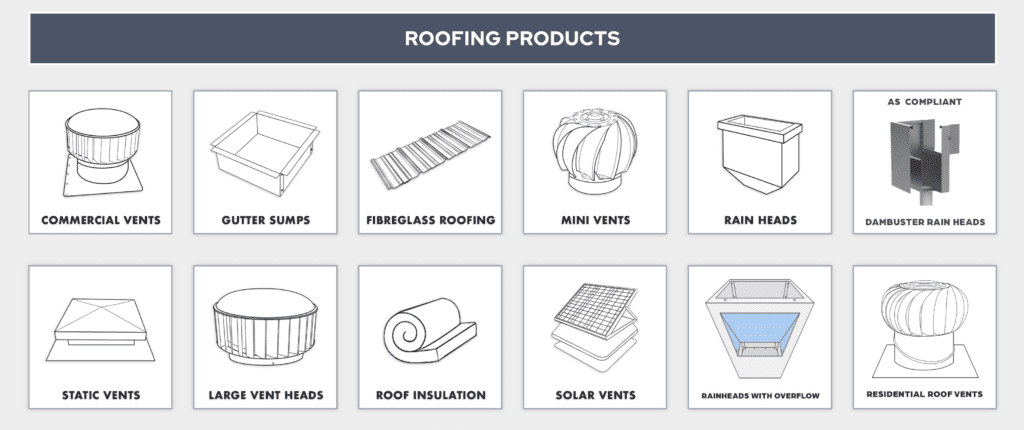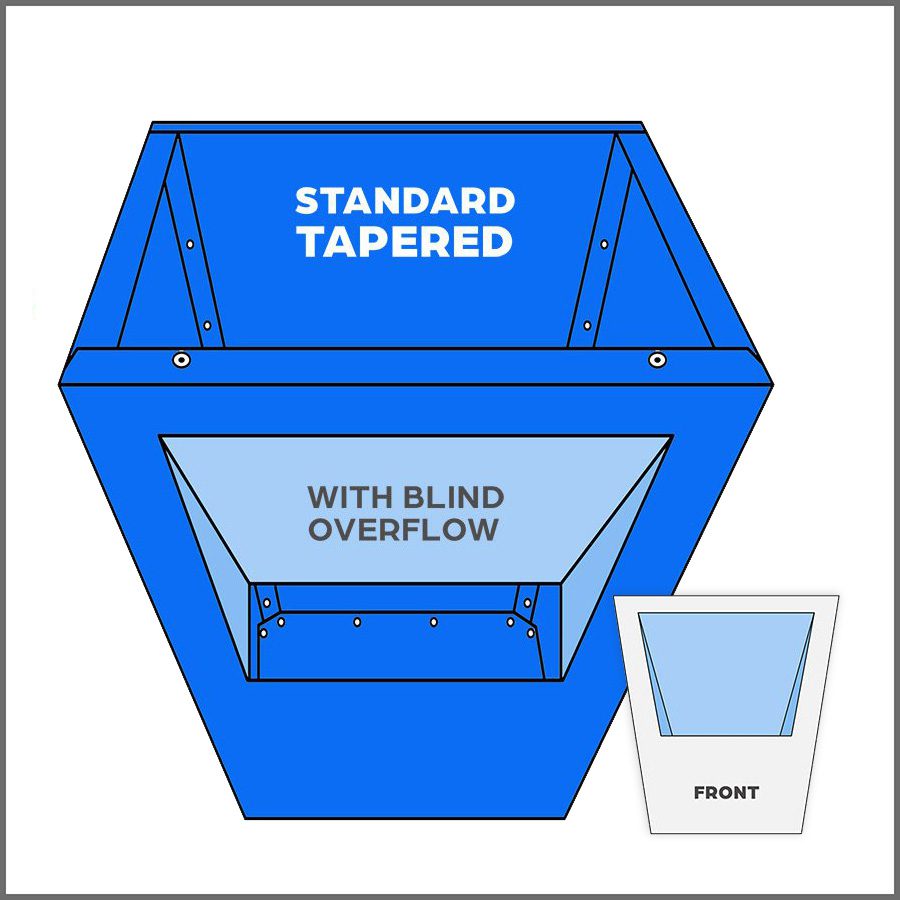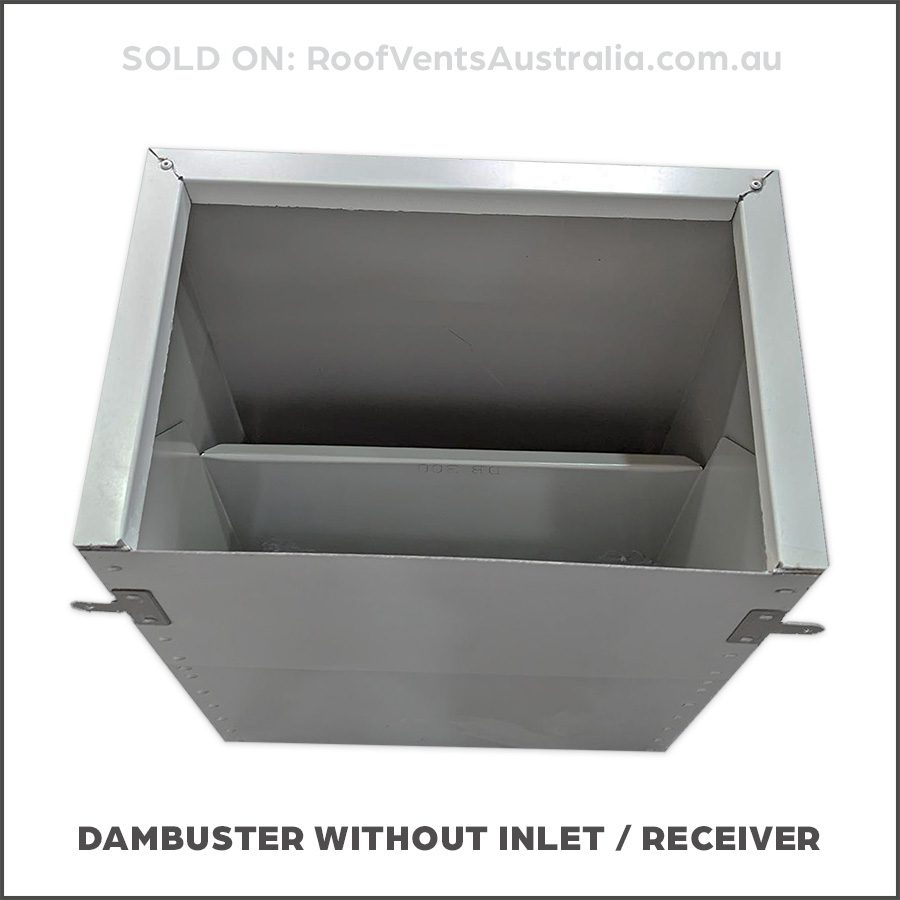Rainwater heads for Box Gutters Online Buy Now
Rainheads > Commercial Vents > Dambuster Rainheads >
Buy Roof Ventilation and Roof Plumbing Supplies Online Now >
Introduction
Roof plumbing plays a critical role in maintaining the structural integrity of buildings in Australia, where heavy rain and changing weather patterns can pose significant challenges. This detailed guide explores various aspects of roof plumbing, focusing on rainwater heads, gutter sumps, gutters, and roof drainage systems. We will delve into Australian standards for roof plumbing, discuss the differences between sumps and rainheads, and explore key installation guidelines. By the end, you’ll understand the best practices for ensuring effective roof drainage, rainwater management, and building protection.
The Role of Rainwater Heads in Roof Plumbing
Rainwater heads, or rainheads, are an essential component in a roof plumbing system. They act as intermediary collection points between the spouting (guttering) and the downpipes, capturing rainwater and allowing it to flow downward. Rainheads also serve as overflow release points, preventing water backup that could damage the roof, gutters, or building interior.
Benefits of Using Rainwater Heads
The use of rainwater heads offers several advantages, including:
- Overflow Prevention: Rainheads have built-in overflow mechanisms to avoid water buildup in case of a blockage in the downpipes.
- Reduced Risk of Water Damage: By directing water away from the building structure, rainheads help prevent water-related damage to the roof, fascia, and eaves.
- Visual Appeal: Custom rainwater heads can be designed to complement the architectural style of a building, adding aesthetic value.
- Enhanced Water Collection: Rainheads are designed to maximize water collection from the roof, contributing to efficient rainwater management.
Key Considerations for Sizing a Rainwater Head
Proper sizing of a rainwater head is crucial to ensure it can manage the expected volume of rainwater. To size a rainwater head, consider:
- Roof Catchment Area: The total surface area of the roof that collects rainwater. Measure the length and width of each section of the roof and multiply them to get the total catchment area.
- Rainfall Intensity: The maximum expected rainfall in your area. This information can be obtained from local weather data or historical records.
- Downpipe Capacity: The size and number of downpipes connected to the rainwater head. Ensure the rainwater head has sufficient capacity to handle the flow from the roof and direct it into the downpipes without overflow.
A well-sized rainwater head should be able to manage peak rainfall conditions while providing an overflow outlet for excess water. In high-rainfall areas, larger rainwater heads are recommended to ensure efficient water drainage.
Exploring the Difference Between Sumps and Rainwater Heads
While rainwater heads and sumps both play roles in roof plumbing, they serve distinct functions. Understanding their differences helps in selecting the appropriate components for your roof plumbing system.
What is a Sump?
A sump is a low point within a gutter system where rainwater is collected and channeled into downpipes. Sumps are often used in box gutters, which require additional capacity to manage larger volumes of rainwater. They act as holding tanks for water before it flows into the downpipes.
Sump Installation and Maintenance
Installing a sump requires careful planning to ensure it functions correctly. Here are key steps to consider:
- Choose the Right Location: Sumps are typically installed at low points in the gutter system where water naturally accumulates.
- Ensure Proper Depth: The depth of the sump must be sufficient to handle peak rainwater flow. In Victoria, the minimum depth requirement depends on the specific design and building codes.
- Connect to Downpipes: Ensure the sump is properly connected to the downpipes to allow smooth water flow. Use appropriate sealing materials to prevent leaks.
- Regular Maintenance: Sumps require regular cleaning and maintenance to prevent debris buildup and blockages. Inspect and clean the sump periodically to ensure it functions correctly.
The Role of Rainwater Heads
Rainwater heads, as mentioned earlier, serve as collection points for rainwater and provide overflow outlets. Unlike sumps, rainwater heads are typically installed outside the building and are visible from the exterior. They act as intermediaries between the spouting and the downpipes, ensuring efficient rainwater flow.
Rainwater Heads vs. Sumps: Which is Better?
Choosing between rainwater heads and sumps depends on the specific design of your roof plumbing system. Rainwater heads are ideal for situations where overflow prevention is crucial, while sumps are better suited for box gutters and other systems requiring additional capacity. In some cases, both rainwater heads and sumps are used in the same system to ensure efficient rainwater management.
Australian Standards for Gutters and Roof Drainage
Australia has specific standards for gutters and roof drainage, designed to ensure safety and efficiency in roof plumbing. The Australian Standard AS/NZS 3500.3 provides guidelines for plumbing and drainage systems, covering various aspects, including:
- Minimum Depth of Box Gutters: The standard specifies the minimum depth requirements for box gutters to ensure they can handle significant volumes of rainwater without overflowing.
- Minimum Fall for Roof Drainage: The standard recommends a minimum slope of 1:100 for roof drainage to ensure efficient water flow toward the gutters and downpipes.
- Installation Practices: The standard outlines best practices for installing gutters, rainwater heads, and downpipes, ensuring they are securely attached and watertight.
The Importance of Proper Slope and Gutter Installation
A proper slope is crucial for efficient roof drainage. A minimum slope of 1:100 ensures that rainwater flows toward the gutters without pooling on the roof surface. The best slope for rainwater collection typically ranges between 1:100 and 1:50, with steeper slopes providing better water flow.
In addition to proper slope, the installation of gutters must be precise. Gutters should be securely attached to the fascia and installed at the correct height to ensure proper water flow. Gutters should not be flush with the fascia, as this can lead to water overflow and damage to the fascia board.
Choosing the Right Gutters for Heavy Rain
For areas with heavy rainfall, selecting the right gutters is essential. The best gutters for heavy rain in Australia are those with a larger capacity, allowing them to handle significant volumes of rainwater without overflowing. Half-round gutters are often considered the most efficient gutter shape, as they provide a smooth flow for water and are less prone to debris buildup.
Rainwater Head Installation Guide
Installing a rainwater head involves several steps to ensure it functions properly and complies with Australian standards. Here’s a comprehensive guide to installing a rainwater head:
- Determine the Installation Location: The rainwater head should be installed at the point where the spouting meets the downpipes. Ensure it is positioned to allow for proper water flow and overflow prevention.
- Secure the Rainwater Head: Use supporting brackets or mounting plates to secure the rainwater head to the building structure. This is especially important for larger rainwater heads that may become heavy when full of water.
- Connect to Downpipes: Attach the rainwater head to the downpipes, ensuring a watertight connection. Use appropriate sealing materials to prevent leaks.
- Test for Proper Functionality: After installation, test the rainwater head by pouring water into it to ensure it flows smoothly into the downpipes. Check the overflow mechanism to ensure it functions correctly.
- Regular Maintenance and Inspection: Rainwater heads require regular maintenance to prevent debris buildup and ensure proper functionality. Inspect and clean the rainwater head periodically to maintain optimal performance.
Conclusion
Roof plumbing in Australia involves a complex system of rainwater heads, gutter sumps, gutters, and roof drainage. By understanding the key components and adhering to Australian standards, homeowners and building professionals can ensure effective rainwater management and prevent water-related damage to buildings. Proper installation, maintenance, and attention to detail are essential for a reliable roof plumbing system that withstands the challenges of Australia’s diverse weather conditions.






